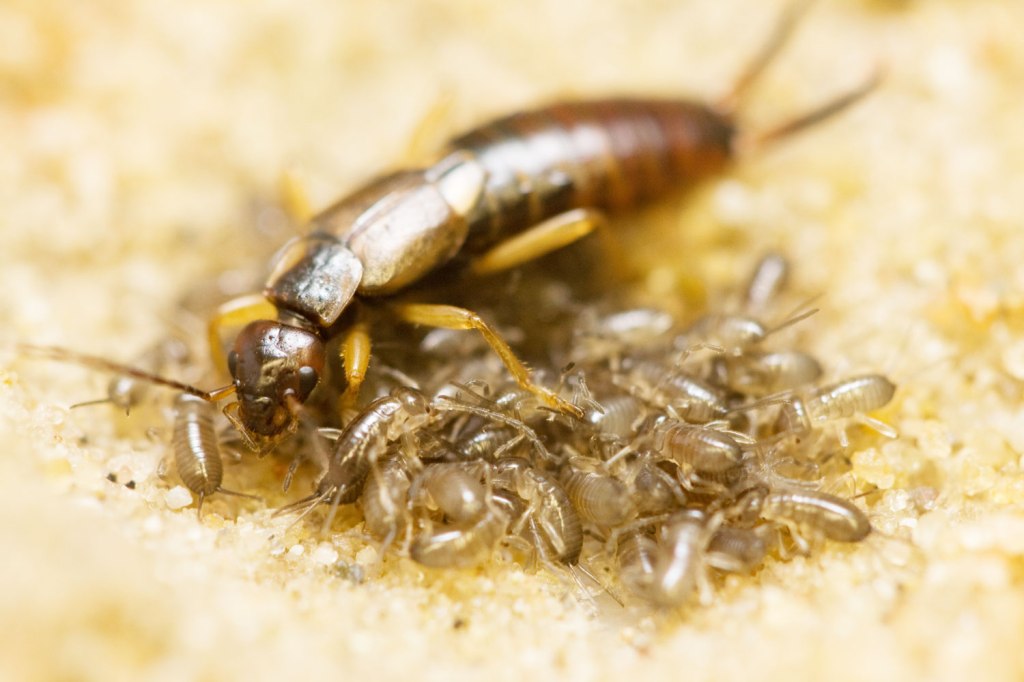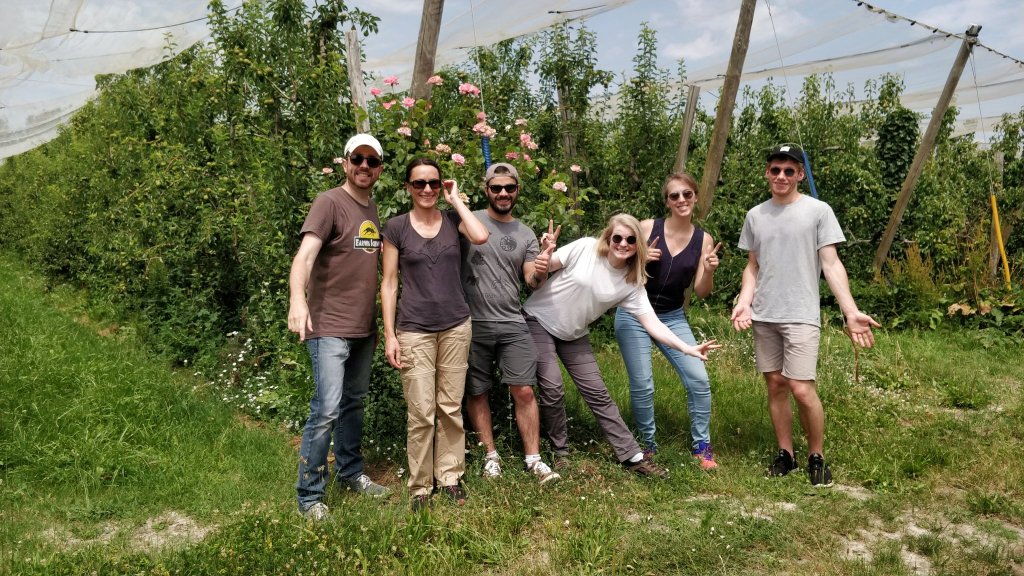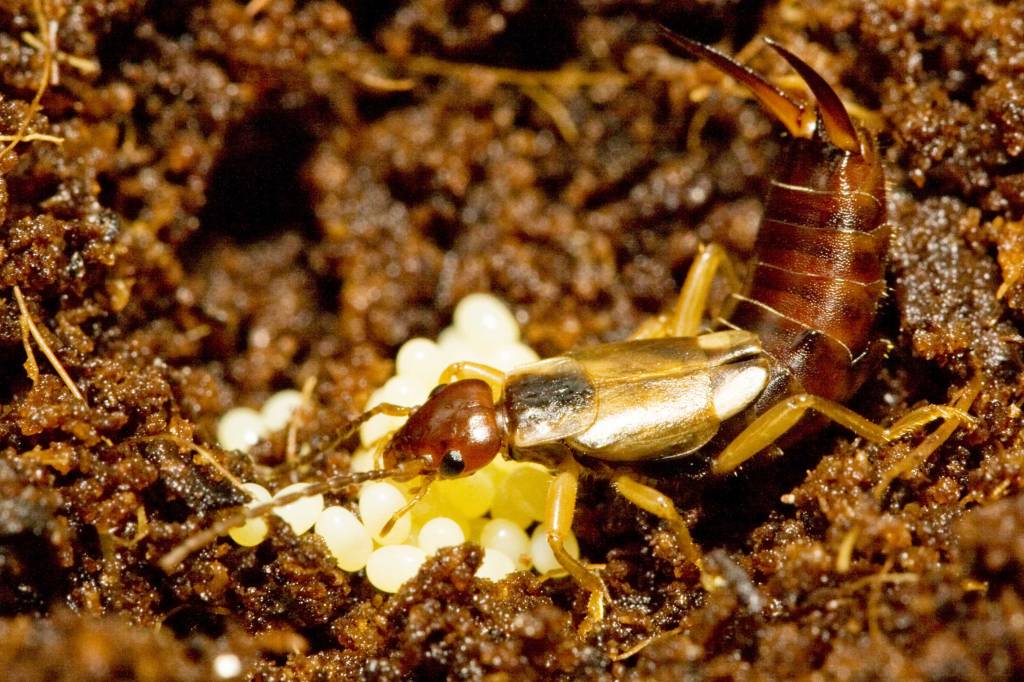IS: Who are you, and what do you do?
I am a tenured CNRS researcher working at the Research Institute of Insect Biology at the University of Tours, France. I did my PhD about 15 years ago on the resolution of social conflicts in ants, and since then I have been studying the early evolution of social life in insects (mostly using non-model species such as earwigs). In my group, we try to understand why individuals switched from solitary to social life (and vice versa), and what parameters may have allowed the maintenance of social life over evolutionary time. Our current projects focus on how early social evolution deals with the conflict/cooperation trade-off, the risk of pathogen transmission, and more generally, on how anthropic pollution may affect social evolution.
IS: How did you develop an interest in your research?
That’s a good question. I don’t really know. I think it’s a step-by-step construction that’s happened through encounters, opportunities and luck. For example, I became interested in behavioural ecology through an optional ecology course in my early years at university, which allowed me to realise that not everything in biology is about molecules and biochemistry. I then became interested in insects because it allowed me to avoid courses on dissecting rats (which I found quite difficult), and it quickly became clear that insect behaviour would be a fascinating subject. I ended up doing a PhD on ants without really knowing ants, having previously done internships on the behavioural manipulation of mosquitoes by a parasite and on chemical communication in dung beetles. It was during my PhD that it all took shape and my taste for social evolution developed.
IS: What is your favorite social insect, and why?
Earwigs, of course! During my PhD, I noticed that researchers interested in social evolution often focus on eusocial species or use comparative approaches between taxonomic groups that contain different forms of sociality. While the resulting work provides important information about the general evolution of eusociality, it is often less relevant for better understanding the very first evolutionary step of social evolution, i.e. when solitary individuals “decided” to adopt group living. To answer this question, one would need to study social (but not eusocial) insects that exhibit relatively simpler forms of sociality, such as family life and aggregation. After reviewing the literature, I realised that the European earwig met these criteria and could be a perfect model system to fill this knowledge gap. Having spent 15 years studying its biology and behaviour, I could not agree more! We are currently extending our knowledge of other species of earwigs, including F. pubescens – the subject of our study published in Insectes Sociaux. The results are very promising, and I have no doubt that these other earwig species will be of great importance to improve our general understanding of early social evolution in insects.

A mother of the European earwig providing care to her clutch of nymphs, copyright by Joël Meunier
IS: What is the best moment/discovery in your research so far? What made it so memorable?
A few years ago, we found that earwig larvae (called nymphs) share food during family life. This form of cooperation was very surprising, because in any animal the nature of sibling interactions typically ranges from competitive (up to and including cannibalism) to neutral. Here we showed for the first time that they can also cooperate, and that this cooperation occurs in a species where maternal care is not obligatory to ensure offspring development and survival! This opened up a large series of experiments to determine whether the benefits of this cooperation could be an evolutionary driver for the maintenance of family life (independent of maternal care), and thus a key promoter for the early emergence of family life. This was memorable because it was a very risky project (as we had no reason to believe that the outcome would be different from the other species) and we had no hope that it would work. It was a good lesson and showed me that sometimes we should test our crazy ideas!
IS: Do you teach or do outreach/science communication? How do you incorporate your research into these areas?
I love public outreach and science communication. Especially when you can make people realise that the insects they don’t like actually have fascinating lives. I often try to draw parallels between human and earwig family life, and I like to make people think: “Why should this happen to earwigs and not to us?”. The answers are often very illuminating, and the boundaries of the comparison are not always obvious.
IS: What do you think are some of the important current questions in social insect research, and what’s essential for future research?
The world as we know it is changing, and insects are at the forefront of the consequences. We often try to understand how species evolved towards sociality, what parameters led them to what we see today, and how social life was the solution to the problems these species faced. But the environment is changing dramatically, and we may wonder whether sociality will be an advantage in the near future. Chemical pollution, global warming, drought, and climatic events are potentially new challenges that these species will have to adapt to in a very short time. Perhaps sociality will be an inconvenience in this new world, and it seems important to me to question the impact of these anthropic changes on the future of social life in insects.
IS: What research questions generate the biggest debate in social insect research at the moment?
I don’t know if this is the biggest debate, but a major challenge in social insect research is the number of replicates. To date, many studies are still conducted on a very limited number of colonies (for practical reasons) and I think this is a significant problem in terms of repeatability. A growing number of studies show that colonies can have very different traits (e.g., personalities) and using a very small number of them can lead to misleading conclusions. This has recently been shown for epigenetic effects on caste determination, but I am convinced that it is a much broader issue.

A picture of the “Earwig group” just after a field sampling session in 2019, copyright by Joël Meunier
IS: What is the last book you read? Would you recommend it? Why or why not?
This is not the last book I read, but probably the one that had the most influence on my research: “The Other Insect Societies” by James R. Costa (ISBN 9780674021631). This book is very well written and provides a comprehensive overview of all forms of insect societies. If you are interested in any insect species that is social but not eusocial, this book is clearly for you. And if you are only interested in eusocial insects, this book will open your mind and make you realize that there are other fascinating forms of sociality out there.
IS: Outside of science, what are your favorite activities, hobbies, or sports?
I mainly play music (bass guitar). My band rehearsals are one of the few times during the week when I can really and effectively stop thinking about work – and it feels great! I also enjoy playing board (and video) games with my children.
IS: How do you keep going when things get tough?
I am lucky enough to be able to quickly put those moments into perspective: I have a fantastic and supportive family, I have great colleagues and friends that I get to interact with every day, I have a steady job where I do not have to worry about getting paid next month, and most importantly, that job is observing the behavior of earwigs! At the end of this argument, things often start to get much easier 😊
IS: If you were to go live on an uninhabited island and could only bring three things, what would you bring? Why?
I would probably bring a terrarium, a camera, and a guitar. The terrarium would allow me to maintain the insects I would catch on the island. The camera would be to take picture of them and to film their surprising behaviour. The guitar would just help me wait for a rescue boat to come 😊

A mother of the European earwig providing care to her clutch of eggs, copyright by Joël Meunier
IS: Who do you think has had the most considerable influence on your science career?
I have had the opportunity to meet many fantastic researchers during my career, and most of them have had a significant impact on me. If I had to choose three, I would go in chronological order and start with my PhD supervisor, Michel Chapuisat. He introduced me to ants and their social behaviour, and taught me how to conduct robust experiments and write papers. I would then move on to my postdoctoral supervisor, Mathias Kölliker. He introduced me to the fascinating world of earwig sociality (which I never left) and showed me that it was possible to be both an excellent researcher and a great human being. I’ve learnt a lot from him about how to create good working conditions in a group. The third is the head of the laboratory where I had my first assistant professorship, Susanne Foitzik. She was the first to give me the freedom and confidence to develop my own group. In addition, I was always fascinated by her extraordinary level of scientific knowledge on all subjects (!) and her endless enthusiasm for results and experiments.
IS: What advice would you give to someone hoping to be a social insect researcher in the future?
Be open-minded, resilient and believe in yourself. Make sure you do what you love, be passionate about it and you will create your own space. Remember that there are as many ways to be a social insect researcher as there are social insect researchers, and there are many ways to be happy in life.
IS: Has learning from a mistake ever led you to success?
I like Nelson Mandela’s phrase: “I never lose. I either win or I learn”. I think it applies very well to a scientific career. You never fail. You either find what you expected, or you learn something new.
IS: What is your favorite place science has taken you?
I am not really a “field” person, as I mostly sample my insects in Europe and in orchards. My favorite place to be is therefore not very exotic. It is probably the labs where I have been invited to present my research and talk with students and colleagues. These meetings are a source of endless energy, ideas and excitement for me, and I always look forward to them!